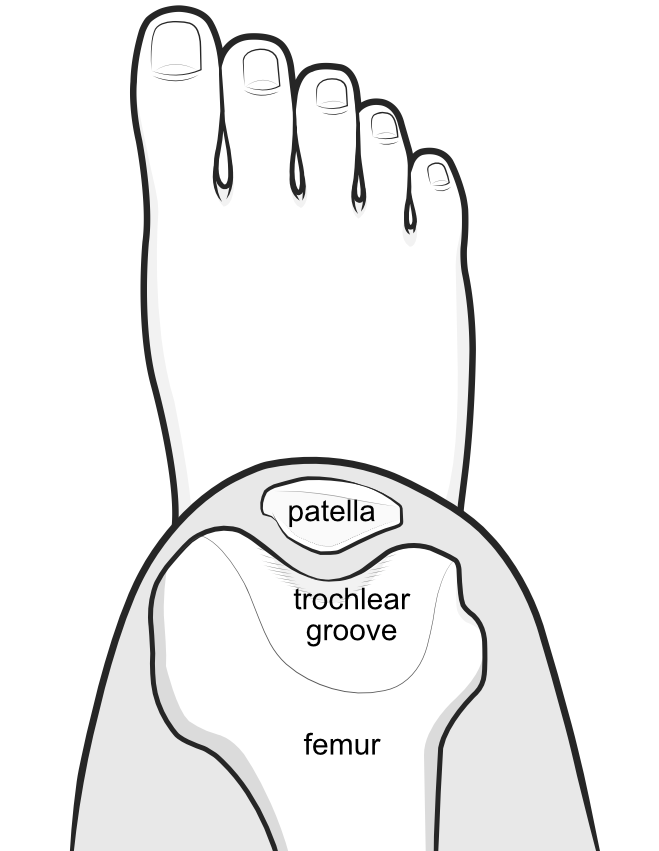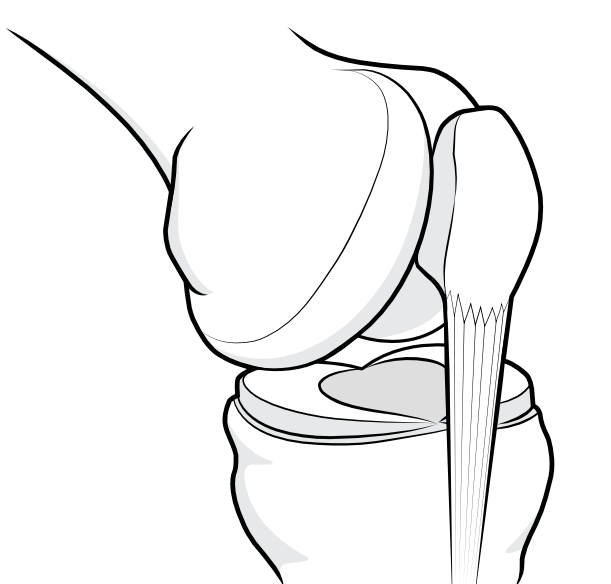Maltracking refers to a patella which is not tracking smoothly in the groove of the underlying femur during normal knee movement.
 Page updated July 2024 by Dr Sheila Strover (Clinical Editor)
Page updated July 2024 by Dr Sheila Strover (Clinical Editor)

Structural abnormalities in the upper part of the groove make the mechanism particularly liable to dislocation.

The patella is like a pulley, attached below to the tibia via the patellar tendon and above to the femur and hip via the quads tendon and muscle and tracking in the groove of the femur with end motion of the knee.
What causes maltracking?
Basically there is a difficulty with alignment of the kneecap in its underlying groove of the femur bone as it glides along this groove during bending and straightening.
There may be structural bony reasons for this, or the muscles controlling movement may simply be out of balance. At the upper end of the groove, even under normal circumstances, there is very little contact between the undersurface of the patella and the groove, and the walls of the groove are flatter here, so any change affecting this region may allow the patella to slip up and over the walls of the groove.
-
Quote from peer-reviewed paper:
"....Patellar maltracking occurs as a result of an imbalance in the dynamic relationship between the patella and trochlea....[and] diagnosis can often be challenging especially in the absence of a documented history of patellar dislocation...."
Citation: Jibri Z, Jamieson P, Rakhra KS, Sampaio ML, Dervin G. Patellar maltracking: an update on the diagnosis and treatment strategies. Insights Imaging. 2019 Jun 14;10(1):65. doi: 10.1186/s13244-019-0755-1. PMID: 31201575; PMCID: PMC6570735.
What are the symptoms of patellar maltracking?
There is dynamic relationship between patella and femur during movement of the knee which is called 'tracking'.
Maltracking is a disturbance of this relationship and results in pain at the front of the knee, and the patient may have a history of frequent 'giving way', 'subluxation' and even a past 'dislocation' of the kneecap. The doctor will assess how lax the patella is in the groove, perform the patellar tilt test. The patient may actively block any attempt at performing the patellar apprehension test.
Imaging findings in established maltracking
The doctor may do special X-ray views or MRI scans, including functional MRI scans where the movement can be followed.
Appropriate imaging may identify risk factors, as well as any structural damage that has already occurred secondary to past dislocations, such as joint cartilage damage, bony damage and ligament damage.
In terms of risk factors, the practitioners will be assessing:
- q-angle
- patella alta
- femoral anteversion
- the distance between the groove and the attachment of the patellar tendon (TT-TG distance)
- patellar tilt
How can maltracking be improved?
The first approach is to strengthen the muscles around the knee and to optimise supportive footwear.
A do-nut brace may offer local support. If surgery is necessary, it may be a matter of repairing torn ligaments (especially the MPFL ligament), adjusting the tension of other fibrous structures supporting the patella on the sides, and repositioning the patella via proximal and distal realignment procedures.
-
Quote from peer-reviewed paper:
"....The most accepted indication for surgical management of patellar instability is the presence of a large displaced osteochondral fracture or loose body."
Citation: Jibri Z, Jamieson P, Rakhra KS, Sampaio ML, Dervin G. Patellar maltracking: an update on the diagnosis and treatment strategies. Insights Imaging. 2019 Jun 14;10(1):65. doi: 10.1186/s13244-019-0755-1. PMID: 31201575; PMCID: PMC6570735.
Forum discussions
- "Mpfl reconstruction for chronic pain"
Teasing out some of the issues with patellofemoral pain from maltracking.
Alignment problems -
 2013 - Patellofemoral Pain - by Dr Ronald Grelsamer (Knee Surgeon)
2013 - Patellofemoral Pain - by Dr Ronald Grelsamer (Knee Surgeon)
 2014 - How to interpret knee X-rays - skyline view - by Dr Sheila Strover (Clinical Editor)
2014 - How to interpret knee X-rays - skyline view - by Dr Sheila Strover (Clinical Editor)
 2013 -
2013 -